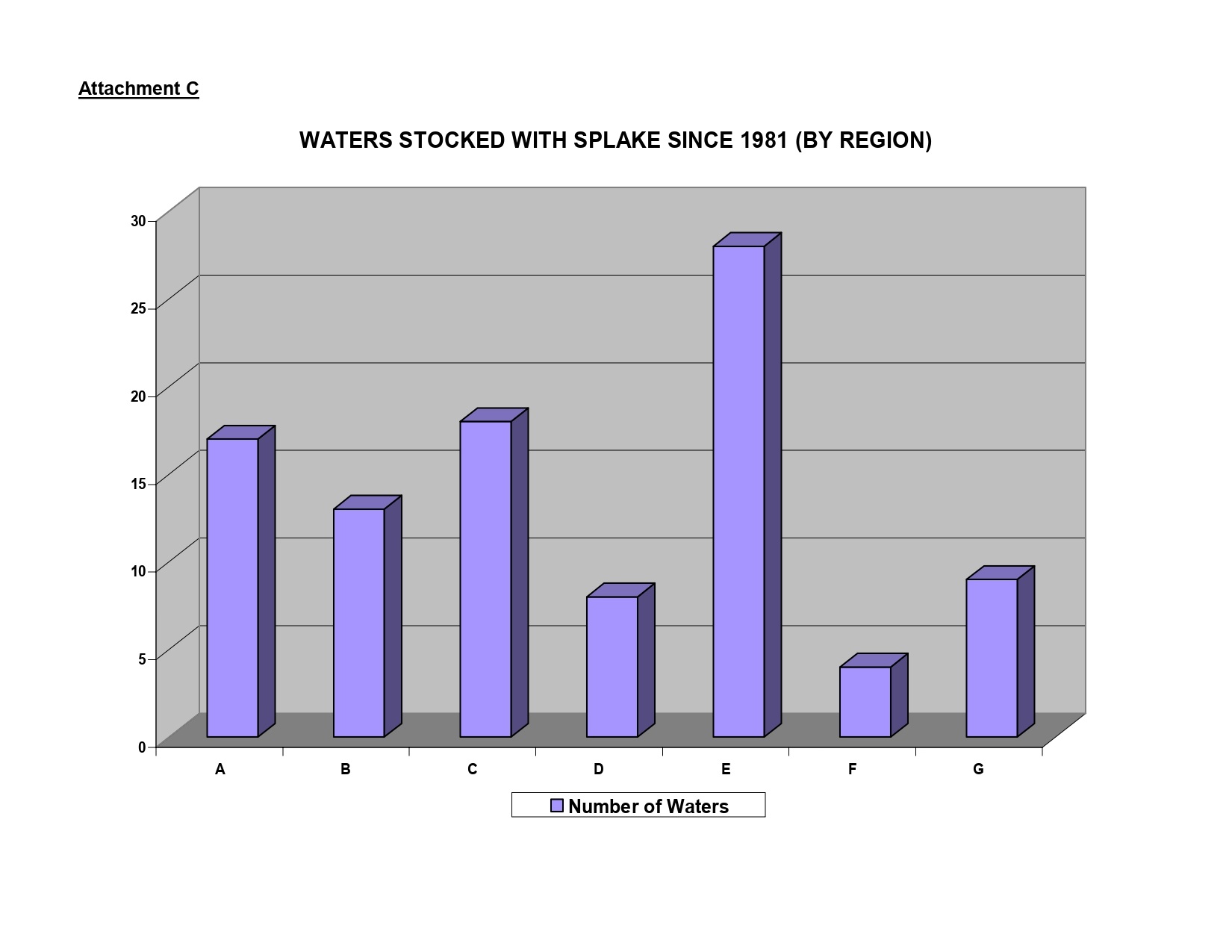How Hybrids Get Out of Hand: A Case Study
How Hybrids Get Out of Hand: A Case Study
Bob Mallard - National Vice Char, Native Fish Coalition
Years ago when I first started advocating for wild native fish I helped found a now defunct small and focused non-prof group called Dud Dean Angling Society (DDAS) in honor of Maine author Arthur Macdougall’s fictitious Maine Guide, Dud Dean.
In 2006, we published a report on Maine’s controversial splake stocking program. Our goal was to show anglers, advocates, and movers-and-shakers how much the program had grown, where it was being done, and what the risks were.
“The primary goal of this study is to show the public what has been done historically, and what is being done today, in regard to the stocking of [splake] in Maine’s inland waters. The data itself tells a compelling story while the quotes from the experts raise some serious questions as to when and where [splake] should and should not be used.”
While one poll after another showed that anglers rated splake below brookies, salmon, lake trout, browns, rainbows, and even bass, as far as species preference goes, the program continued to grow in regard to number of waters and fish stocked.
“Another interesting aspect in regard to SPK is how those who stand the most to gain by them (anglers) feel about them. Support for SPK within the angling community ranges from outright opposition, to passive protest (simply do not fish for them), to acceptance. However, in no case that we found did SPK rank above naturally occurring species such as BKT, rainbow trout, brown trout, or salmon in regard to popularity.”
While we were being told that the program was not growing, and that it was not a risk to wild native salmonids, a quick internet search for “splake” turned up pages of links associated with Maine. DDAS believed otherwise…
“We see the situation regarding [splake] as being endemic of an increasing acceptance of, and dependence on, hatchery-raised fish in Maine (hatcheries now cost over $2,000,000 per year and represent over half of the total fisheries budget). In addition, [splake] represent what some consider modern day fish husbandry at its worse; i.e., a stocking program with no intention of establishing self-sustaining populations of fish.”
As the risks associated with stocking in general, stocking of highly piscivorous fish like splake, and stocking hybrids, are well-documented and nearly universally accepted, my focus here is simply how the program started and grew.
That this happened in Maine, the single most important wild native brook trout state in the country is quite telling, and a warning to all that things like this can happen anywhere.
Below are some slides that tell the real story as to what was happening with hybrid splake in Maine at the time. The data used to develop the charts came from MDIFW stocking reports:
Splake stocking was not limited to southern Maine as implied in the original species management plan…
The number and distribution of waters stocked with splake in Maine shows just how bad things had gotten.
And the number of waters being stocked with splake was increasing, and significantly…
Note the drop in 1996. This was due to a near total loss of splake at the hatchery.
The number of splake being stocked was increasing as well, and likewise, significantly…
And one region, Region E - Moosehead, was leading the charge in regard to splake stocking…
And one County, Piscataquis, part of Region E, had twice as many waters stocked with splake than any two others combined…
Note that Piscataquis County is arguably Maine’s most wild trout rich counties.
Per MDIFW, splake were developed to provide “trout” fishing in southern Maine with Regions A, B, and C being the first to receive fish. Note that Region C is home to rare and critically endangered Atlantic salmon…
Regions D and F, Western Mountains and Baxter respectively, both rich in wild trout waters were the last regions to stock splake. They also kept things to a dull roar…
Region G, Northern Maine, another area rich in wild trout waters started stocking waters with splake early, but like Regions D and F kept the numbers of waters low…
However, Region E, Moosehead, another area rich in wild trout waters got in early, ramped up quickly, and continued to add splake waters until it surpassed all others…
Of equal concern, and in fact greater, was where splake that had been stocked elsewhere were showing up. This included Bald Mountain Pond (one of just eleven rare Arctic charr waters in the contiguous United States), Pierce Pond (a high-value wild native brook trout water), and the Rapid and Magalloway Rivers (the two finest wild native brook trout rivers in the country)…
Next up was a proposal by Region E to use splake as an alternative to rotenone for eliminating nonnative and highly invasive smelt…
“Between 1998 and 2004, the MDIF&W stocked 11,000 SPK in Thissell Pond (Piscataquis County) in an attempt to eradicate illegally introduced smelts that had put a popular wild BKT fishery at risk. The project took 7 years to complete and cost the department approximately $11,660.”
After years of trying to remove the smelt in Thissell Pond using splake, they still persisted and chemical reclamation was required to rid the pond of these invasive pests…
So there you have it… It doesn’t take long for things like hybrids can get out of hand.
If this, stocking hybrids where wild trout and salmon are plentiful and wild native trout present, can happen in Maine, it can happen anywhere — including your home state…
Could tiger trout, a cross between a brook trout and a brown trout be next? In your state?

















